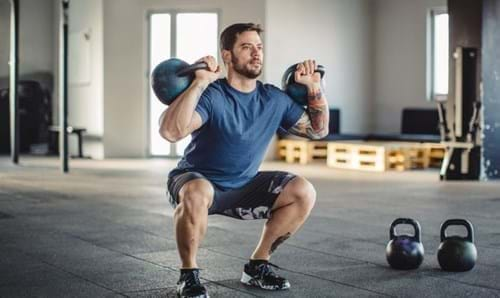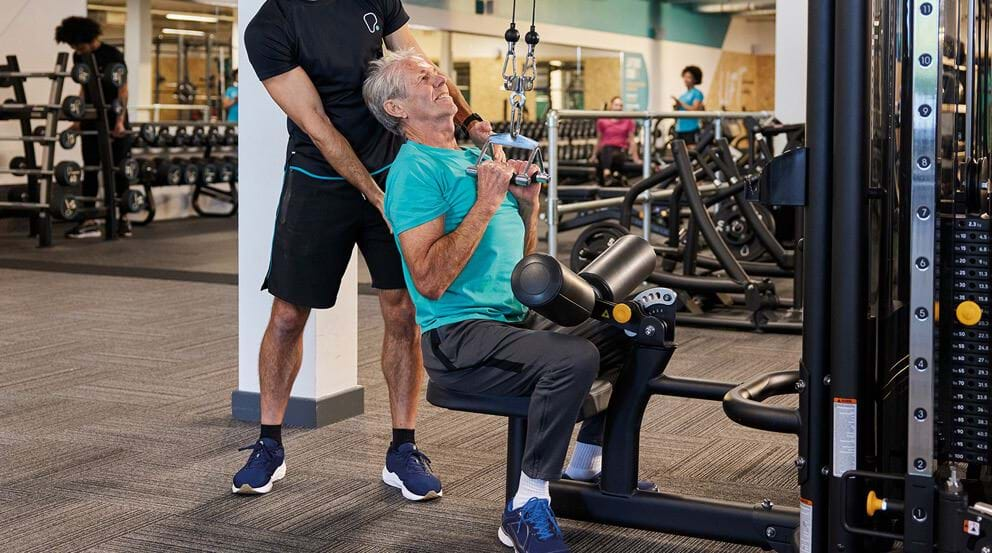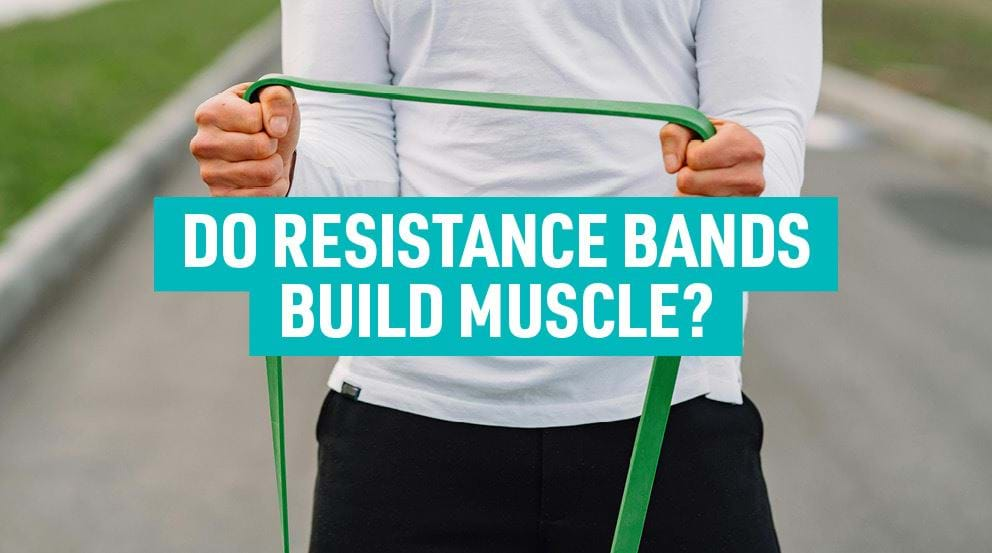What Type Of Strength Training Is Right For You?

What Is Strength Training | Benefits | Why Are There Different Types | Does Strength Training Build Muscle | Bodybuilding | Powerlifting | Calisthenics | CrossFit | Olympic Lifting | Plyometrics
For most people, lifting weights and strength training are one and the same. The two have become synonymous with each other over the years, but they are two separate entities. Weight lifting is just one type of strength training, of which there are many.
Each type of strength training its own objectives, benefits, and methods.
In this blog, we've broken down six different types of strength training, including what they are, who they're good for, and how to get started.
What Is Strength Training?
The fundamentals of strength training involves challenging the muscles to work against a load or force in order to build muscle strength, as well as mass and endurance.
While lifting weights has been commonly associated with strength training, there are other ways to create a load or resistance to the muscles to build strength.
What Are The Benefits Of Strength Training?
Strength training provides various benefits for both physical and mental health. These include:
[Increased Basal Metabolic Rate](https://www.puregym.com/blog/how-to-speed-up-your-metabolism-naturally/#:~:text=Your%20Basal%20Metabolic%20Rate%20(BMR,energy%2C%20through%20movement%20and%20exercise.) (BMR) -- this means that the calories you burn at rest are higher, which can make it easier to stick to a calorie deficit!
Increased energy levels and ability to complete daily activities
Protection against injury
Enhanced bone health and improved bone density
Increased muscle mass
Improved flexibility and mobility
Why Are There Different Types of Strength Training?
The underlying principle of strength training is simple: challenge the muscles, build strength. All forms of strength training do this, but the objectives and outcomes of each style can actually be very different.
While those participating in strength training are likely to share similar or overlapping goals, the different styles are utilised to meet more specific objectives.
Depending on your aesthetic, strength, or overall fitness goals, some types of strength training may be more suitable. For example, both gymnasts and powerlifters are extremely strong, but the strength needed in gymnastics is extremely different to the strength needed for powerlifting, and following the same strength training exercise routine would not work for either of these.
Some people prefer one type of strength training over others as they find it more enjoyable. If you don't have specific goals, choosing a style of strength training you enjoy can help with adherence.
Does Strength Training Build Muscle?
The short answer is yes, strength training is one of the best ways to build muscle mass. When you challenge your muscles with resistance, whether it's through lifting weights, using resistance bands, or even just using your body weight, you create microscopic tears in the muscle fibres. As your body repairs these tears, it builds new muscle tissue, leading to muscle growth and increased strength.
However, it's important to note that different types of strength training may emphasise muscle building to varying degrees. For example, bodybuilding-style training typically focuses heavily on hypertrophy, or muscle growth, through higher volume and isolation exercises targeting specific muscle groups. Powerlifting, which prioritises maximal strength gains with fewer repetitions and heavier weights, can be less effective at building muscle mass even when strength is increased more.
Consistency and progressive overload (where you gradually increase the challenge to your muscles over time) are also key principles for maximising muscle growth, regardless of the specific type of strength training you choose. If you do not continually challenge the muscles, mass gains will be limited.
Six Different Types Of Gym Strength Training To Try
Bodybuilding
Bodybuilding workout plans focus on maximising muscle size and minimising body fat to alter body composition and achieve aesthetic goals. This is achieved by using exercises and training volume aimed at muscular hypertrophy rather than strength, although strength is also increased.
Professional bodybuilding competitions judge the appearance of competitors and consider muscle mass, symmetry, and definition. Leading up to competitions, bodybuilders reduce their calories to lose fat and show off the muscles they've built.
Often, those competing will even reduce their water and carbohydrate intake in a bid to make their muscles look more pronounced.
While bodybuilding competitions are on the extreme end, the fundamental bodybuilding goal of body recomposition is common amongst many gym goers and many typical strength training exercise programmes are aimed at increasing muscle size to improve body composition.
Pros
While bodybuilding can be extreme, if you're not looking to compete then it doesn't have to be this way. The fundamental goal of bodybuilding is to work towards body recomposition, which is suitable for those looking to gain muscle mass, lose fat, or a combination of both!
Cons
Professional bodybuilding pushes the body to extremes and is especially taxing when a competition is close by! A lack of calories provides a myriad of issues and can cause low energy, greater risk of injury, loss of libido, eating disorders and in females, can result in amenorrhea.
Powerlifting
Powerlifting is a strength sport that tests an individual's 1 rep max across three main events: the squat, deadlift, and bench press. The main aim of powerlifting is to build maximum strength, and unlike bodybuilding, there is limited attention on aesthetic appearance.
During competitions, powerlifters are given three attempts to successfully execute each lift and must adhere to the rules of performance. Once complete, the heaviest, successful attempt of each event is added together to calculate the competitor's total score.
Despite competitions being exclusive to three lifts, powerlifters will also use other strength training exercises in their training to contribute to their overall strength.
Pros
Powerlifting is a great way to challenge your body and build raw strength, without focusing on aesthetics. It involves lifting heavy in a low rep range which can be preferable for those who find training high volume repetitive or dull.
Cons
This style of strength training involves pushing your body to its max, which comes with risk of injury. While these risks are reduced with correct technique, powerlifting can lead to wear and tear injuries in the muscles, joints, and bones.
Calisthenics
Callisthenics uses bodyweight exercises and gravity to train the entire body, incorporating full body movements that target large muscle groups, such as pistol squats, muscle ups, and handstand push ups.
Despite having been around for some time, this style of strength training is becoming increasingly popular, and for good reason! It helps to improve strength, cardiovascular fitness, coordination, flexibility, and balance. This style of strength training is best suited to those who prefer skills-based training and have less focus on power and aesthetic goals.
Lots of callisthenics exercises don't require equipment and often incorporate gymnastic movements to add something a little different to your strength training routine. Exercises focus on building strength across a full range of motion, improving control and [mind muscle connection](https://www.puregym.com/blog/the-beginners-guide-to-gym-slang/#:~:text=The%20mind%2Dmuscle%20(or%20mind,targeting%20while%20doing%20the%20exercise.), and minimising muscular imbalances.
Pros
Callisthenics can be done with minimal equipment, making it more accessible than other types of strength training. Because a lot of callisthenics training is skills-based, it can be more fun and varied, and it is more likely to improve flexibility, mobility, and stability than other strength training styles.
Cons
Callisthenics is a challenging style of strength training, and it requires lots of practice! Because this style of training progresses by moving to more advanced exercise variations, you may be more likely to hit a training plateau than with strength training styles that involve lifting weights.
It's easier to increase the load by adding weights than progressing from a split squat to more advanced variations like the split squat or moving from pull ups to one arm pull ups. Further training systems and styles may be necessary in generating progression.
A lot of advanced callisthenics skills require a good level of mobility and flexibility, which can be challenging for those switching to this type of training.
CrossFit
CrossFit is a popular style of strength training that offers a high intensity, strength, and conditioning workout. CrossFit exercises involve functional movements that aim to develop power, muscle mass, strength, flexibility, and stamina.
CrossFit gyms have been recognised for their friendly atmosphere, with many gyms providing a workout of the day (WOD) for their members to complete. WODs consist of a range of movements from cleans and front squats to muscle ups and kettlebell swings.
CrossFit training also involves different types of exercise including heavy weights, high reps, callisthenics, plyometrics, and cardio, so it's a great all-rounder training style!
Pros
A great benefit of CrossFit is the varied movements and high intensity it provides. This helps to continually challenge the performer and can aid in overcoming training plateaus! This style of training also helps to improve endurance and aerobic fitness.
Cons
One of the biggest downsides of CrossFit is that memberships are expensive, and not everyone can afford to access these gyms. While this training style can be completed alone in other gyms, it removes the competitive and encouraging atmosphere. CrossFit can also have a higher risk of injury due to the use of heavy lifting, dynamic exercises, and fast pace.
Check out our blog on CrossFit vs Hyrox here.
Olympic Lifting
If you've ever watched the summer Olympic games, you might be familiar with Olympic lifting. The competitive side of Olympic lifting requires competitors to lift a loaded barbell from the ground to overhead using two official moves: the snatch, and the clean and jerk.
The competition may only require the mastering of two lifts; however, lifters typically employ other movements in their training to optimise their performance. Power cleans, front squats, squat clean, push jerks, squat snatches and power snatches all contribute well to Olympic lifting!
You can find out how to perfect your form through our Olympic weightlifting guide.
Pros
While this style of lifting is notable at the Olympics, Olympic lifting is great for anyone who enjoys technical movements that require power and strength. Olympic lifts can be quite versatile, and you can even incorporate them into your HIIT sessions to aid your cardiovascular health.
Cons
Olympic lifting is advanced and requires serious strength and technical skill. While it's a great way for intermediate and advanced gym goers to challenge themselves, attempting these lifts before you're ready can risk injury.
Plyometrics
If you're looking to develop power, you might want to try plyometrics! This style uses quick and explosive movements to exert maximum force and aid speed, endurance, strength, and cardiovascular health.
Plyometric training requires lots of energy and is great for building power, speed, and strength. This style of training is likely to be helpful if you play fast-paced sports, such as football, rugby, or netball.
A varied workout, plyometric sessions might include, box jumps, push ups, lunge knee ups and burpees for an intense full body blast that's best suited for those working on their speed and muscle endurance!
Pros
Plyometric training can be a dynamic and interesting way to build full body power and strength, and improve cardiovascular health. Plyometric exercises help to develop fast twitch muscle fibres which support agile, explosive movement.
Cons
Plyometrics can put a lot of stress on the joints and is best avoided if you're prone to pain or are recovering from injury. These exercises are high-energy, and it can be difficult to maintain a high volume of training in this style.
Do I Have To Stick To One Style Of Strength Training?
While some people fit neatly into one style of strength training, others prefer not to choose between them. If you've decided you're not keen on any of these styles of strength training and prefer to stick to your usual resistance training regime, that's completely fine!
Remember, listening to your mind and body and choosing consistent exercise that you enjoy is the most important thing!
On the other hand, if you've read this article and are interested in trying multiple styles, why not try incorporating a few different types into your training programme? For example, you could work on Olympic lifts and accessory lifts one workout, callisthenics another, plyometrics another, or incorporate all three styles into one workout by using a few exercises from each.
If you're new to strength training, we'd advise mastering your form and building strength in lots of resistance training movements first before giving the above styles a go!
Master exercises like squats, deadlifts, chest presses, shoulder presses and rows using a combination of free weights, cable machines and fixed weight machines to build strength and muscle mass. This is a great way to build a base level of strength which will protect you from injury and improve performance in these different styles.
You can also incorporate workouts that target cardiovascular health, mobility, and coordination for optimum results.
Ready to build some strength? Find your nearest gym here.


